
In ancient Greek mythology and religion, Artemis is the goddess of the hunt, the wilderness, wild animals, nature, vegetation, childbirth, care of children, and chastity. She was heavily identified with Selene, the Moon, and Hecate, another Moon goddess, and was thus regarded as one of the most prominent lunar deities in mythology, alongside the aforementioned two. She would often roam the forests of Greece, attended by her large entourage, mostly made up of nymphs, some mortals, and hunters. The goddess Diana is her Roman equivalent.

A woman is an adult female human. Prior to adulthood, a female human is referred to as a girl. The plural women is sometimes used in certain phrases such as "women's rights" to denote female humans regardless of age.

Eileithyia or Ilithyiae or Ilithyia was the Greek goddess of childbirth and midwifery, and the daughter of Zeus and Hera. In the cave of Amnisos (Crete) she was related with the annual birth of the divine child, and her cult is connected with Enesidaon, who was the chthonic aspect of the god Poseidon. It is possible that her cult is related with the cult of Eleusis. In his Seventh Nemean Ode, Pindar refers to her as the maid to or seated beside the Moirai (Fates) and responsible for the creation of offspring. Her son was Sosipolis, who was worshiped at Elis.

A doula is a trained professional who provides expert guidance for the service of others and who supports another person through a significant health-related experience, such as childbirth, miscarriage, induced abortion or stillbirth, as well as non-reproductive experiences such as dying. A doula may also provide support to the client's partner, family, and friends.

Mokosh is a Slavic goddess mentioned in the Primary Chronicle, protector of women's work and women's destiny. She watches over spinning and weaving, shearing of sheep, and protects women in childbirth. Mokosh is the Mother Goddess.

The Goddess movement includes spiritual beliefs or practices which emerged predominantly in North America, Western Europe, Australia, and New Zealand in the 1970s. The movement grew as a reaction to perceptions of predominant organized religion as male-dominated, and makes use of goddess worship and can include a focus on women, or on one or more understandings of gender or femininity.

Sati, also known as Dakshayani, is the Hindu goddess of marital felicity and longevity, and is worshipped as an aspect of the mother goddess Shakti. She is generally considered the first wife of Shiva, the other being Parvati, who was Sati's reincarnation after her death.
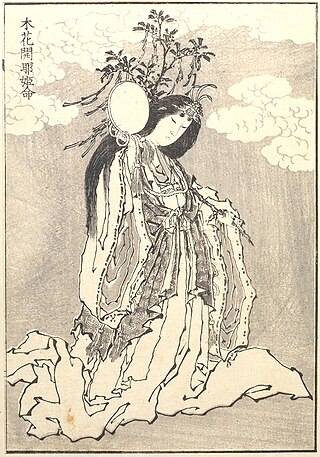
Konohanasakuya-hime is the goddess of Mount Fuji and all volcanoes in Japanese mythology; she is also the blossom-princess and symbol of delicate earthly life. She is often considered an avatar of Japanese life, especially since her symbol is the sakura.

In Roman mythology, Morta was the goddess of death. She was believed to preside over infants who died.
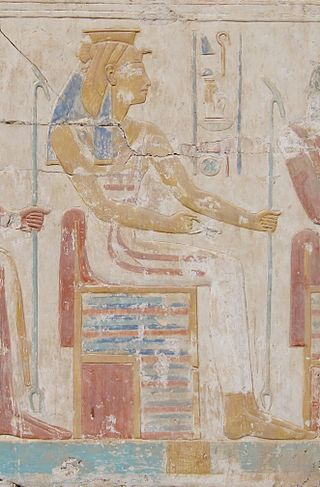
Heqet, sometimes spelled Heket, is an Egyptian goddess of fertility, identified with Hathor, represented in the form of a frog. To the Egyptians, the frog was an ancient symbol of fertility, related to the annual flooding of the Nile. Heqet was originally the female counterpart of Khnum, or the wife of Khnum by whom she became the mother of Her-ur. It has been proposed that her name is the origin of the name of Hecate, the Greek goddess of witchcraft.
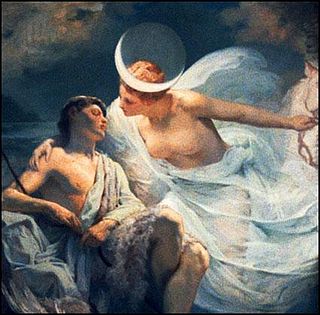
A lunar deity or moon deity is a deity who represents the Moon, or an aspect of it. These deities can have a variety of functions and traditions depending upon the culture, but they are often related. Lunar deities and Moon worship can be found throughout most of recorded history in various forms.

A deity or god is a supernatural being who is considered divine or sacred. The Oxford Dictionary of English defines deity as a god or goddess, or anything revered as divine. C. Scott Littleton defines a deity as "a being with powers greater than those of ordinary humans, but who interacts with humans, positively or negatively, in ways that carry humans to new levels of consciousness, beyond the grounded preoccupations of ordinary life".
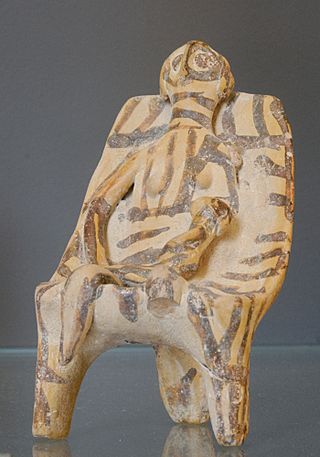
Kourotrophos is the name that was given in ancient Greece to gods and goddesses whose properties included their ability to protect young people. Numerous gods are referred to by the epithet such as Athena, Apollo, Hermes, Hecate, Aphrodite, Artemis, Eileithyia, Demeter, Gaia, Cephissus and Asclepius. They were usually depicted holding an infant in their arms. Deianeria and Ariadne were occasional shown on vases with their children, Hyllus and Staphylos and Oenopion respectively, but there is no evidence that there was a cult around them as kourotrophic figures.
Tenenet, alts. Tjenenet, Zenenet, Tanenet, Tenenit, Manuel de Codage transliteration Tnn.t, was an ancient Egyptian goddess of childbirth. She is mentioned in texts dating from the Ptolemaic period as well as in the Book of the Dead.
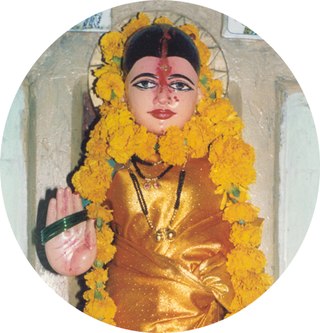
Tapati is a goddess in Hinduism. She is known also as the goddess of the river Tapati and mother-goddess of the South where she brings heat to the earth. According to certain Hindu texts, Tapati was the daughter of Surya and Chhaya, one of the wives of Surya.

Panthoibi is a goddess associated with civilization, courage, fertility, handicraft, love, victory, warfare and wisdom in the mythology and religion of Ancient Kangleipak. She is a consort of the God Nongpok Ningthou. She is considered to be one of the divine incarnations of Leimarel Sidabi and is also identified as a form of Goddess Nongthang Leima. She is worshipped mainly by the Meitei people in Manipur, Assam, Tripura, Bangladesh and Myanmar.
Wakahirume is a goddess of the rising sun in Japanese mythology. She is the daughter or younger sister of Amaterasu. Some interpretations view her as the personification of the morning sun.
Gration is a giant from Greek mythology. His name might have been corrupted. He was killed by Heracles.
Modern historians' knowledge of ancient Roman gynecology and obstetrics primarily comes from Soranus of Ephesus' four-volume treatise on gynecology. His writings covered medical conditions such as uterine prolapse and cancer and treatments involving materials such as herbs and tools such as pessaries. Ancient Roman doctors believed that menstruation was designed to rid the female body of excess fluids. They believed that menstrual blood had special powers. Roman doctors may also have noticed conditions such as premenstrual syndrome.














